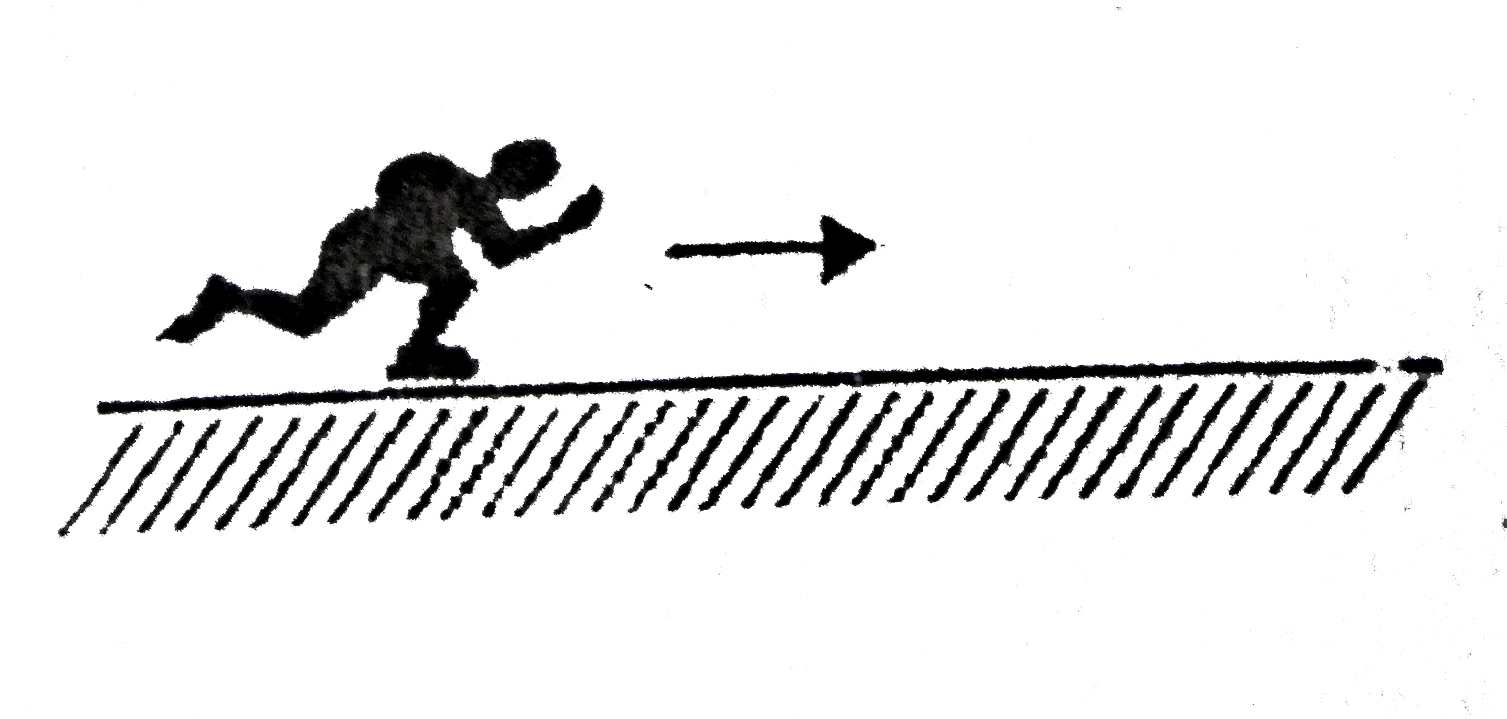A particle is rotates in a circular path of radius 54m with varying speed v=4t2 . Here v is in m/s and t inn second . Find angle between velocity and accelearation at t=3s .
The correct Answer is:D
To find the angle between the velocity and acceleration of a particle rotating in a circular path with varying speed, we can follow these steps:
Step 1: Determine the speed at t = 3s
Given the speed function:
v=4t2
At t=3 seconds:
v=4(32)=4×9=36m/s
Step 2: Calculate the tangential acceleration (at)
The tangential acceleration is given by the derivative of the speed with respect to time:
at=dvdt
Calculating the derivative:
dvdt=d(4t2)dt=8t
At t=3 seconds:
at=8×3=24m/s2
Step 3: Calculate the radial acceleration (ar)
The radial acceleration is given by the formula:
ar=v2R
Where R=54m is the radius of the circular path. Substituting the values:
ar=(36)254=129654=24m/s2
Step 4: Determine the total acceleration (a)
The total acceleration a can be found using the Pythagorean theorem since at and ar are perpendicular:
a=√a2t+a2r
Substituting the values:
a=√(24)2+(24)2=√576+576=√1152=24√2m/s2
Step 5: Find the angle θ between velocity and acceleration
Using the relationship between the tangential and radial accelerations:
tan(θ)=arat
Substituting the values:
tan(θ)=2424=1
Thus,
θ=tan−1(1)=45∘
Final Answer:
The angle between the velocity and acceleration at t=3 seconds is 45∘.
---
Given the speed function:
v=4t2
At t=3 seconds:
v=4(32)=4×9=36m/s
The tangential acceleration is given by the derivative of the speed with respect to time:
at=dvdt
Calculating the derivative:
dvdt=d(4t2)dt=8t
At t=3 seconds:
at=8×3=24m/s2
The radial acceleration is given by the formula:
ar=v2R
Where R=54m is the radius of the circular path. Substituting the values:
ar=(36)254=129654=24m/s2
The total acceleration a can be found using the Pythagorean theorem since at and ar are perpendicular:
a=√a2t+a2r
Substituting the values:
a=√(24)2+(24)2=√576+576=√1152=24√2m/s2
Using the relationship between the tangential and radial accelerations:
tan(θ)=arat
Substituting the values:
tan(θ)=2424=1
Thus,
θ=tan−1(1)=45∘
The angle between the velocity and acceleration at t=3 seconds is 45∘.
Topper's Solved these Questions
- CIRCULAR MOTIONBOOK - DC PANDEY ENGLISHCHAPTER - CIRCULAR MOTIONEXERCISE - Exercise 10.2
7 Videos
- CIRCULAR MOTIONBOOK - DC PANDEY ENGLISHCHAPTER - CIRCULAR MOTIONEXERCISE - Exercise 10.3
4 Videos
- CIRCULAR MOTIONBOOK - DC PANDEY ENGLISHCHAPTER - CIRCULAR MOTIONEXERCISE - Miscellaneous Examples
5 Videos
- CENTRE OF MASS, LINEAR MOMENTUM AND COLLISIONBOOK - DC PANDEY ENGLISHCHAPTER - CENTRE OF MASS, LINEAR MOMENTUM AND COLLISIONEXERCISE - Level 2 Subjective
21 Videos
- COMMUNICATION SYSTEMBOOK - DC PANDEY ENGLISHCHAPTER - COMMUNICATION SYSTEMEXERCISE - Only One Option is Correct
27 Videos
Similar Questions
A particle is moving on a circular path of radius 1 m with 2 m/s. If speed starts increasing at a rate of 2m/s2, then acceleration of particle is
View SolutionA particle moves in a circle of radius 2cm at a speed given by v=4t, where v is in cms−1 and t is in seconds.
(a) Find the tangential acceleration at t=1s
(b) Find total acceleration at t=1s.
View SolutionThe speed of a particle moving in a circle of radius r=2m varies with time t as v=t2, where t is in second and v in m/s. Find the radial, tangential and net acceleration at t=2s.
View SolutionA particle moves in a circle of radius 20 cm. Its linear speed is given by v=(3t2+5t) where t is in second and v is in m/s. Find the resultant acceleration at t = 1s.
View SolutionA particle moves in circle of radius 1.0 cm at a speed given by v=2.0 t where v is in cm/s and t in seconeds. A. find the radia accelerationof the particle at t=1 s. b. Findthe tangential acceleration at t=1s. c.Find the magnitude of the aceleration at t=1s.
View SolutionThe speed of a particle moving in a circle of radius r=2m varies with time t as v=t2, where t is in second and v in m/s. Find the radial, tangential and net acceleration at t=2s.
View SolutionA particle moves in a circle of radius 20 cm. Its linear speed is given by v=2t, where t is in second and v in metre/ second. Find the radial and tangential acceleration at t=3s.
View SolutionA particle moves in a circle of radius 20cm. Its linear speed is given by v=2t where t is in seconds and v in ms−1. Then
View SolutionA particle moves in a circle of radius 30cm. Its linear speed is given by v=2t, where t in second and v in m/s. Find out its radial and tangential acceleration at t=3s.
View SolutionIf a man has a velocity varying with time given as v=3t2,v is in m/s and t in sec then :

Find out the velocity of the man after 3sec.
View Solution
